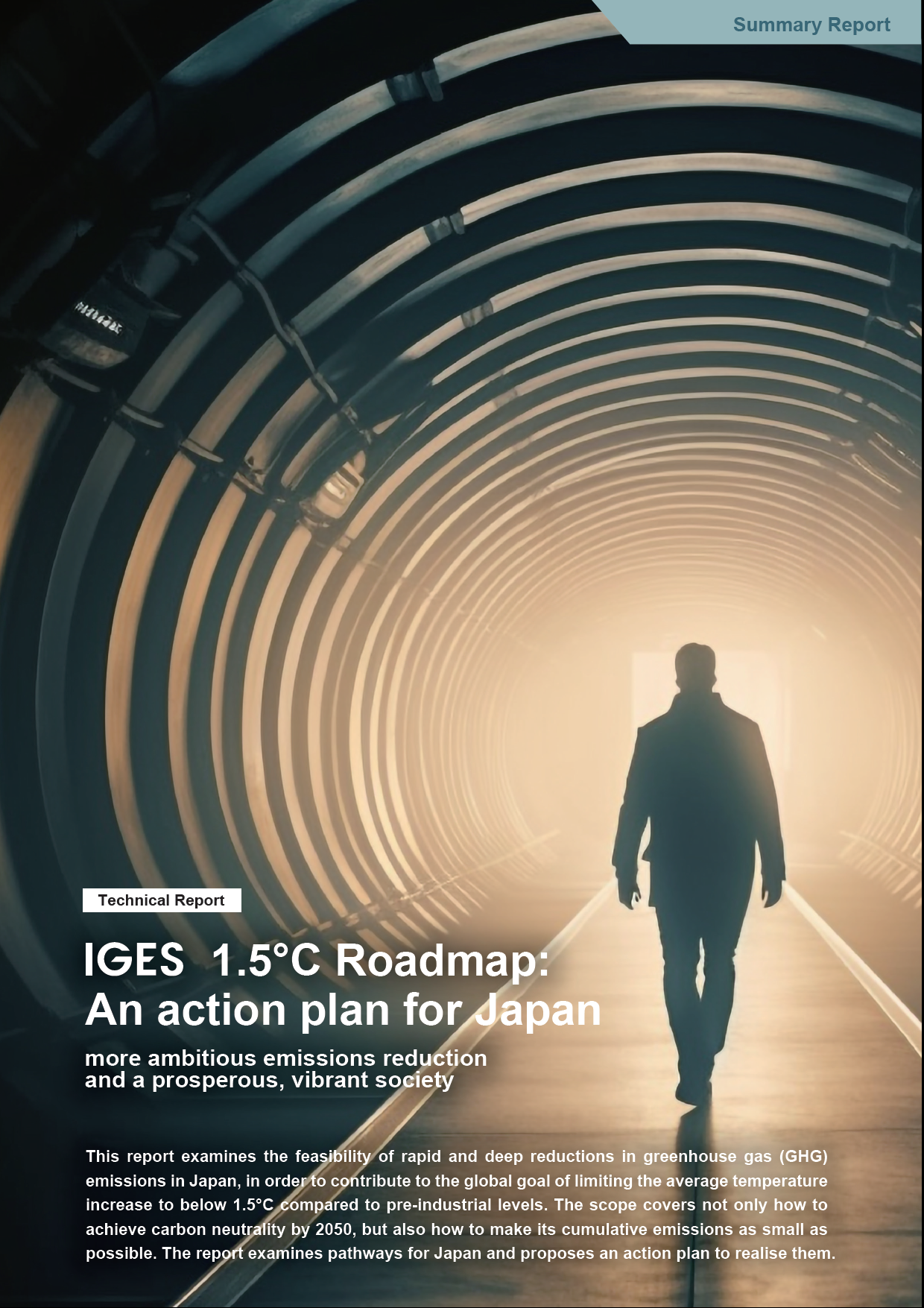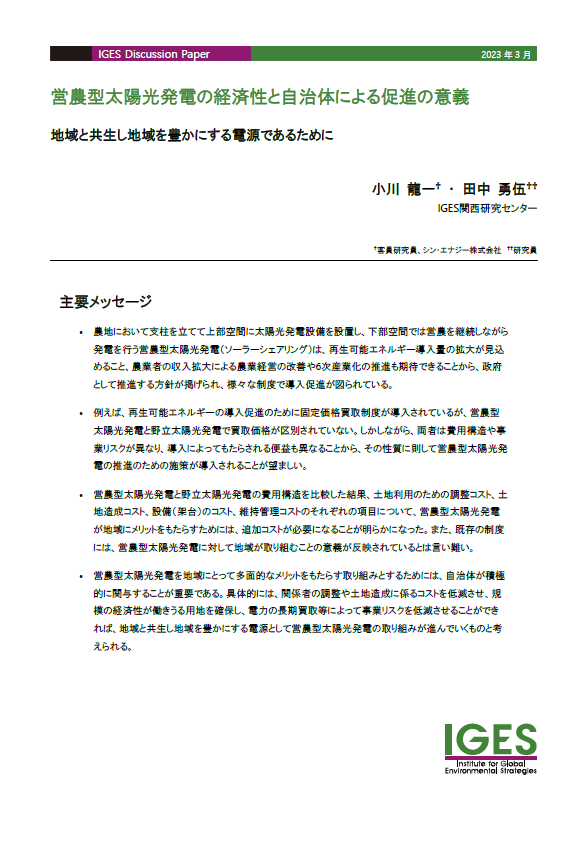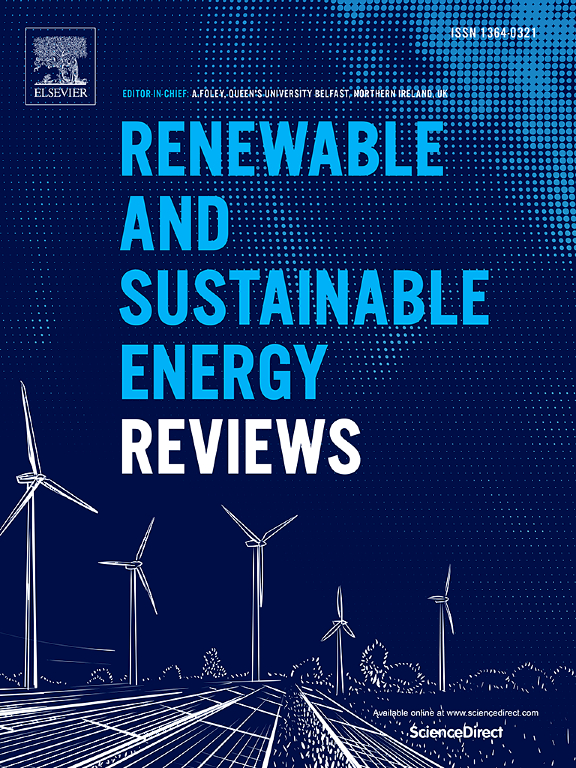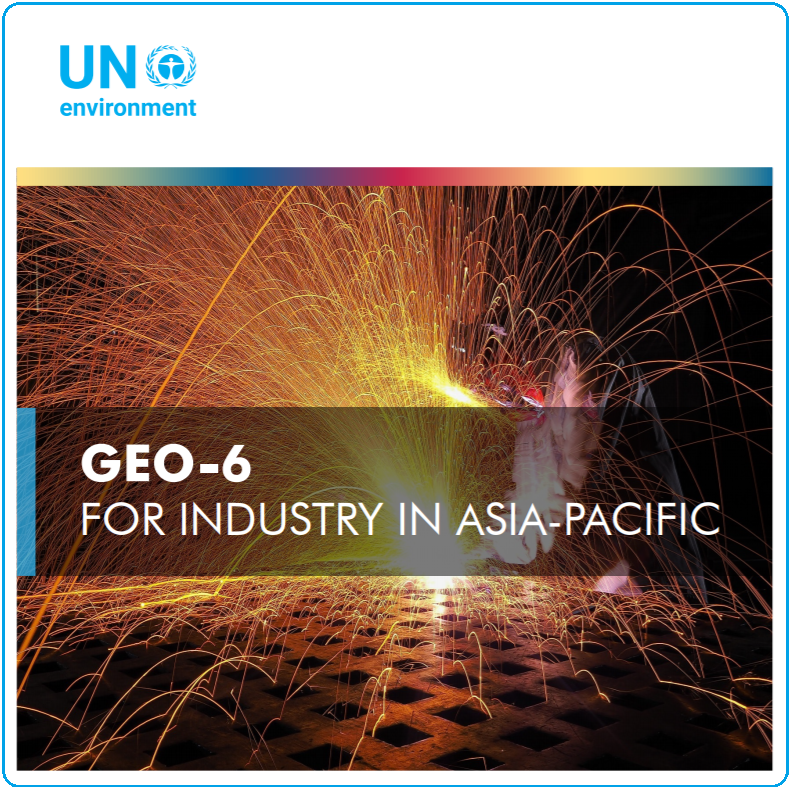本レポートは、世界平均気温の上昇を産業革命前と比べて1.5℃以内に抑えるという目標の達成に向けて、2050年までにカーボンニュートラルを実現するだけではなく、累積排出量をできる限り小さくする観点から、日本国内で早期に大幅な温室効果ガス(GHG)排出量削減を果たす可能性を検討し、その実現のためのアクションプランをまとめたものである。 2024年4月2日更新 謝辞の追記、出典の追記、誤記の修正を行いました。 企業の方向けに使いやすく再構成した「 1.5℃ロードマップ - 脱炭素でチャンスをつかむ。未来をつくる。 」もご活用ください。
- Clear all
- SDGs: (-) Goal 7. Affordable and Clean Energy
- Topic: (-) Sustainable Technology
- Topic: (-) Sustainable Transitions
- Region/Country: (-) Asia
- Region/Country: (-) Costa Rica
- Region/Country: (-) Polynesia
- Region/Country: (-) Western Africa
Results 1 - 10 of 41 (Sorted by date)
This report examines the feasibility of Japan not only achieving carbon neutrality by 2050, but also making significant reductions in greenhouse gas (GHG) emissions, so as to make its cumulative emissions as small as possible, thereby contributing to the global goal of limiting the average temperature increase to below 1.5°C compared to the pre...
農地において支柱を立てて上部空間に太陽光発電設備を設置し、下部空間では営農を継続しながら発電を行う営農型太陽光発電(ソーラーシェアリング)は、再生可能エネルギー導入量の拡大が見込めること、農業者の収入拡大による農業経営の改善や6次産業化の推進も期待できることから、政府として推進する方針が掲げられ、様々な制度で導入促進が図られている。 例えば、再生可能エネルギーの導入促進のために固定価格買取制度が導入されているが、営農型太陽光発電と野立太陽光発電で買取価格が区別されていない。しかしながら、両者は費用構造や事業リスクが異なり、導入によってもたらされる便益も異なることから、その性質に則して営農型太陽光発電の推進のための施策が導入されることが望ましい。...
ASEAN Centre for Energy Policy Brief
1. The ASEAN State of Climate Change Report (ASCCR) presented ASEAN’s mitigation goal: i) Achieve net-zero greenhouse gas (GHG) emissions as early as possible in the latter half of the 21st century; and ii) Cap peak GHG emissions as soon as possible after 2030 to ensure the net-zero GHG emission goal is met on schedule. 2. However, the updated...
In 環境経済・政策研究
先行研究をレビューし、テレワークの着手障害、継続障害に企業の業種が影響を与えているという仮説を設定した。第二に、コロナ禍における企業のテレワークに関するアンケート調査をもとに上記仮説の検証を行った。
Keywords:
In Renewable and Sustainable Energy Reviews
“Just Transition” is an important, brand new concept to implement policies towards decarbonisation of the power sector in Japan. However, a knowledge gap still remains between this concept and policy discussion at a practical level. Therefore, using the existing scenarios of decarbonisation of the power sector and employment factors for the power...
Our lifestyles, through the impacts of our day-to-day activities such as eating, moving and commuting, heating and cooling our homes, caring, working, and so on, have become major threats to the sustainability of the environment. While continued economic growth and urbanisation in many countries are expected, it is imperative to consider how we...
In Global Environment Outlook 6 For Industry in Asia-Pacific
Asia and the Pacific’s unrelenting industrial development has been a driving force in the economic growth of scores of countries in the region and beyond. This shift has led to greater prosperity, increased urbanization and sustained population growth. Yet as the region has become the “world’s factory”, it is increasingly realizing not only the...
In Journal of Resources, Energy, and Development (JREAD)
This paper details the efforts made by Institute for Global Environmental Strategies (IGES) and The Energy and Resources Institute (TERI), under their Japan–India collaborative projects, to promote low carbon technologies (LCT) among small and medium enterprises (SMEs) in India. The empirical evidence gathered during the projects show that three...
In Case Studies on Transport Policy
A large proportion of Asia’s urban population is served by informal modes of transport known as paratransit. Many of the vehicles in this informal sector contribute to rising air pollution and greenhouse gas (GHG) emissions. Energy-efficient technologies could make paratransit environmentally sustainable. However, the purchase and use of clean...






